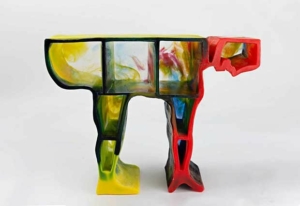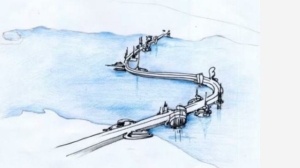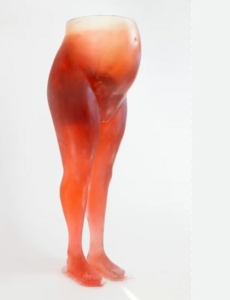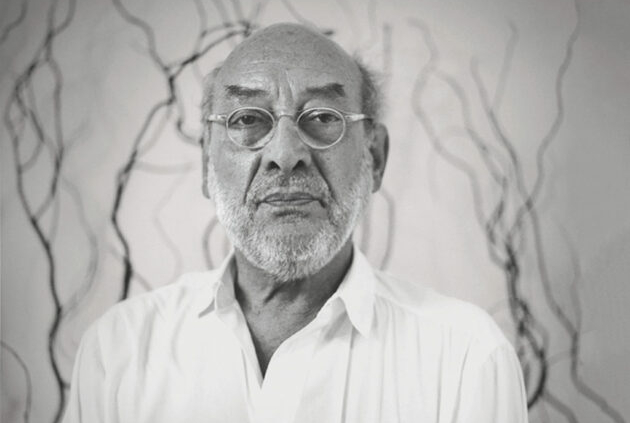THE MASTER OF RADICAL DESIGN
“Our creativity must help the world to be different”. Gaetano Pesce
In Gaetano Pesce’s design philosophy there are always more meanings, but above all there is the freedom to be incoherent. Colour, self-irony, political and social connotation
His objects always have a dual objective: to be functional and to make people think. The search for materials is always avant-garde, but they are accompanied by a round, colourful, human style in violent opposition to the mere functionality of American-style industrial design.
Nowadays with generations battered by wars and crises, his design philosophy becomes welcome fresh air, poised between being Art and Design in contrast to industry. The materials he uses are liquid materials – resins, elastomers, polyurethane foams – as parallelism and expression of liquid time, in which values change constantly and quickly. It is with this research that Carlo Scarpa called him ‘The Foam Man’.
At the end of the day, design has only one rule: break the mould, and Gaetano has succeeded very well in this, bringing this subject matter to be not abstract but figurative, so that these created objects have a voice that can speak to the public.
The Up armchair is perhaps the example that most reflects Gaetano’s design principles. An armchair in the shape of a woman, vacuum-packed and made with cutting-edge technology. The first example of political expression of Italian design: an armchair that universally recounts the condition of women in any time and context.
EXCURSUS OF WORKS WITH SOCIAL DISRUPTIVENESS THROUGH EXTRACTS
This article has analysed products that aim to make people talk and create a kind of social denunciation of particularly difficult topics. For the analysis, Gaetano’s own descriptions were extrapolated from various interviews.
-POLTRONA UP
-TIRED MAN
-THE STRAITS OF MESSINA
-THE VASES
ARMCHAIR UP
“At that moment I was telling a personal story about what my concept of woman is: woman has always been, in spite of herself, a prisoner of herself. So I liked to give this armchair a shape of a woman with a ball and chain, which is also the image traditional image of the prisoner’.
THE TIRED MAN THE ETHICAL FATIGUE OF THE STRONG SEX
A large mon umental installation, realised in collaboration with the City of Milan, entitled ‘Tired Man’ tells of the ethical fatigue of Strong Sex.
umental installation, realised in collaboration with the City of Milan, entitled ‘Tired Man’ tells of the ethical fatigue of Strong Sex.
“Man in the past has made a lot of discoveries, important achievements, invented aeroplanes and so on, but all this has caused a form of energy drain that sees him tired today, and the signs of this tiredness are that politicians do not serve the countries they govern, many people use incorrect and dishonest attitudes, and in general life instead of projecting itself positively towards the future, becomes impoverished.
The man is tired and fortunately the woman is taking more and more space in the public and no longer in the private, to do things that make sense, because the woman’s function is to serve, I don’t mean serve in the banal sense of the term, but to serve the places in which she invests her time and commitment, so in politics, in social work in business and so on, giving results that are evident. I think the lack of honesty of some men does not happen in women. The woman is still an individual who, having lived for centuries in the private sphere, is full of genuine energy and this should give us pause for thought’.
The large sculpture of the tired man, eight metres high, is intended to make people think about this. Man is tired, and this is due to the continuation of dishonesty aimed at selfish gain. In contrast, the transition of women into the leading role in the public sphere has been observed for decades.
“The liquidity of our present is amalgamated with the female spirit that takes on different identities according to need. I believe that the future will be feminine.
The emancipation of women has provoked in men a weariness identifiable in the fear of losing control over the weaker sex, which has resulted in unprecedented violence. Our time is at odds with male rigidity, while it matches perfectly with the elasticity of the female spirit. Our present is liquid, it has nothing to do with homogeneity and static thinking. hinting that this is the time of women: flexible, curious, energetic. The woman no longer has the ball and chain while the male is immobile’.
“Instability, elasticity, liquidity and therefore softness are expressions of our time. The values of the modern world reject rigidity: they are mobile, flexible. Feminine. I have no doubt, the future belongs to women. With their intellectual and organisational skills, if they have more power, it will be good for everyone. They will improve the world’.
THE DREAM OF THE STRAIT OF MESSINA:
A SHOWRROM BRIDGE, ATTRACTION FOR THE WORLD

Following the project proposals for the Messina Strait bridge, Gaetano gave a new point of view on the project. More than a point, a complete perspective based on what is the concept of Italian projects going for the extraordinary and not stopping at the banality of a bridge or an underwater tunnel that already existed and therefore without the attraction of innovation. Perhaps a dream, but with dreams mankind has realized the beauties of the world. Many are to be found in Italy, where great creators and visionaries have left endless examples to follow.
The architect takes inspiration from the typical Italian tradition of inhabited bridges Ponte Vecchio in Florence and the Rialto Bridge in Venice are the most striking examples. In terms of cost, a tunnel would be less onerous, but unable to give our country the prestige and pride we need. So why not take this tradition to a larger format?
The bridge should be an opportunity to express the cohesion and difference of the peninsula. A bridge where the commissioners are the regions of Italy that design a pylon that together support the road and rail carpet, but also the support for built volumes, where each can showcase itself, its qualities and riches with hotels and restaurants with stunning views, restaurants and shops
VASES

Vases can be considered one of his favourite forms. Throughout his career, Pesce has designed an infinite number of vessel shapes – each of which has taken on a form and personality of its own – inspired by a range of subjects, from spaghetti to lava, flames to trees, not to mention mountains. Often colourful, irregular and eccentric, they openly embrace figurativeness and reject flat abstraction, becoming living entities in their own right. “Vases are fundamental elements and must be treated as life-giving objects. When you have flowers, that’s where you put them, with water; we are all born from a vase – a woman’s womb – and when we die, our ashes are collected in a vessel, an urn”. Last year, at Design Miami, he presented perhaps his most striking vase, a large resin floor vase, which places on a pair of legs a semi-circular cup in the shape of a mother’s womb: an indispensable metaphor.
Vases are fundamental elements and must be treated as life-giving objects. which, in addition to resin, include papier-mâché, foam rubber and felt.
“Imperfection creates uniqueness. Difference brings the life-giving thrill of randomness into the series”.
Roberto Leone


